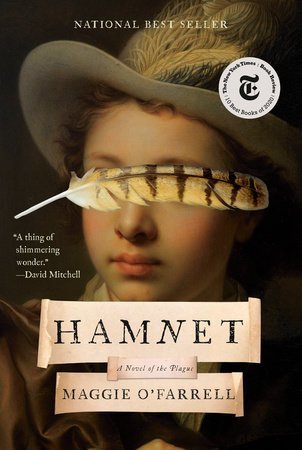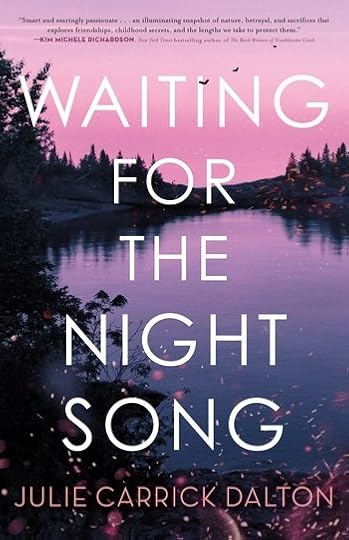Elizabeth A. Havey's Blog, page 10
March 28, 2021
Some of The Amazing People I Have Met
 We meet many people during our lives. There is often the iconic story of the teacher, doctor, employer who teaches, employs and cares for a young man or woman who goes on to become known in the world: the scientist who creates the polio vaccine; the political activist who becomes a state senator and then president of the United States; the gardener who loves plants and then becomes known for his gardening advice. The writer who wins the Pulitzer.Every one of you has someone you worked with, met or taught—someone who has gone on to do great things. Maybe that person is you!Today I’m sharing some of the amazing people I have met who still inspire me to this day.
We meet many people during our lives. There is often the iconic story of the teacher, doctor, employer who teaches, employs and cares for a young man or woman who goes on to become known in the world: the scientist who creates the polio vaccine; the political activist who becomes a state senator and then president of the United States; the gardener who loves plants and then becomes known for his gardening advice. The writer who wins the Pulitzer.Every one of you has someone you worked with, met or taught—someone who has gone on to do great things. Maybe that person is you!Today I’m sharing some of the amazing people I have met who still inspire me to this day.THE BEGINNING
Born, raised, and completing my education in Chicago—there are hundreds of people during that time in my life who had great influence on me, who loved and encouraged me. Certainly, every member of my loving family.
BUT WHAT PATHWAY TO TAKE
My biology teacher at Mundelein College saw something in me, called me into her office to underline that I should NOT major in English, become a teacher. I should immediately switch to the sciences, go into medicine. I didn’t listen.
But after teaching high school English at BLOOM TOWNSHIP HIGH SCHOOL (I loved my students) and having my children, I became fascinated with medicine and followed her advice, became a nurse. I worked in the maternity unit at MERCY HOSPITAL in Chicago, assisting pregnant women of all ages and backgrounds. Like teaching, this position opened my vision of life, stressed the importance of understanding all persons in our society.
LIVING IN IOWA EQUALS POLITICS
Then a few years later my husband accepted employment in Des Moines, Iowa—another adventure. Des Moines is the state capital, and because of Iowa’s first in the nation caucus, it is always the center of political activity. My husband and I couldn’t help but become more involved in politics. When HILLARY CLINTON ran, we were sitting in the Drake Dinner at 5:00 in the morning, watching her prepare for interviews on all major stations. We were friends with DR. ANDY McGUIRE, who ran for governor of Iowa, who has been head of the Iowa Democratic party and will always have political blood running in her veins. Through Andy, we met Hillary that morning, and I asked her how she did it all. She teared up. And for those reading who remember a similar episode, this was way before New Hampshire.
SENATOR BARACK OBAMA won the caucuses and I was able to shake his hand during a meet and greet in Des Moines. That’s a huge memory for me. But that event was also fortuitous, as the woman standing next to me was an RN at the Polk County Health Department in Des Moines. I had recently lost the amazing work I had done for Meredith Corporation in Des Moines—(think Better Homes & Gardens, Midwest Living, Country Home and many other amazing magazines), because the Meredith Books group had shut down. (Thanks to Terri Fredrickson who guided me through the years I proofread for her.) So I interviewed at the health department and was hired JUST AT THE TIME, — H1N1 was surging.
But because of my work at MEREDITH BOOKS, I had met JAMES WAGENVROOD, a writer from New York City, who became my mentor and dear friend. We actually wrote a book together that you would not think would be in my wheelhouse, MIANI INK, MARKED FOR GREATNESS.
I also met and toured the garden of ELVIN McDONALD, gardener, writer, and lovely person. You might be familiar with his: A GARDEN MAKES A HOUSE A HOME.
BOOK SIGNINGS
The Des Moines Library (newly built in the re-emerging city center with a roof that originally was covered in grass, a salute to the green movement) hosted authors and there I met ELIZABETH BERG. She shook my hand and said I needed to get my novels out of the drawers where they were sitting. I’m still working on that project. She was charming, of course.
THE IOWA WRTERS’ WORKSHOP
And speaking of writing, Iowa is the home of the University of Iowa, in Iowa City, famous for its creative writing program: The Iowa Writers’ Workshop. An easy drive down Route 80 and you’re there!
So get jealous now: I and twenty other writers spent a weekend with Pulitzer Prize winning ELIZABETH STROUT, known for her novels OLIVE KITTERIDGE, OLIVE AGAIN, AMY And ISABELLE, MY NAME IS LUCY BARTON (and more). I’ve read ALL her work and encourage you to do so.
There were more wonderful teachers at Iowa: my friend and helpmate SUSAN CHEHAK who helped and encouraged me to publish my collection of short stories: A MOTHER’S TIME CAPSULE.
ONE FINAL and FUN STORY
Through Andy McGuire we met many people in Democratic politics: Governor Vilsack, former Vice President Mondale, Governor of Vermont Howard Dean—but the most memorable was meeting NANCY PELOSI.
We were in Andy’s inviting house for a fundraiser for a House Representative. I was sitting in the back of the room. I have often found myself in the back of rooms, but when someone is speaking, I go back to my grade-school days—I look right at the speaker, focus on what she or he is saying. When Nancy finished, she became surrounded by people. My husband and I got up quietly and walked into the dining room. I was sure I had seen some chocolate cupcakes along with other goodies set out on Andy’s dining room table.
But then someone was tapping me on the back. I turned. It was Nancy Pelosi. She said, “I came over to meet you.”
Okay! Why? I guess Andy had suggested that she do so. As we chatted, John asked her, as only John would, “What is the most important thing in your life going on right now?” He was waiting for a political response, but Nancy answered: “My grandchildren.” We loved that.
The bottom line in sharing all of this with you is that I have been blessed. The people I have met in person and the people I continue to meet online and now in my new but old home of Chicago, are all important to me in so many ways. So thank you….AND, ANYONE READING THIS–YOU ARE ALL AMAZING, Beth
Photo Credit Citizenship Creations Stock.
March 20, 2021
HAMNET A Novel of the Plague
WHY READ THIS NOVEL
Maggie O’Farrell could not have known that our spinning globe would be plagued by a virus starting in late 2019. It takes months, maybe years to research a novel like HAMNET, a novel that takes place in the 1500s. But how fortuitous, as her finished work bears the subtitle, A Novel of the Plague, and was published in July 2020.
This book is an artistic treasure, a moving story, and I am reviewing it for you today, and urging you to read it.
O’Farrell dedicates the book TO WILL, which is her husband’s name, but she might also be dedicating this lyrical novel to William Shakespeare.
At the very beginning of the book, O’Farrell provides us with the following Historical Note:
In the 1580’s, a couple living on Henley Street, Stratford (this is Stratford upon Avon in England), had three children: Susanna, then Hamnet and Judith, who were twins. The boy, Hamnet, died in 1596, aged eleven. Four years or so later, the father wrote a play called Hamlet.
O’Farrell also quotes a source to let us know that: Hamnet and Hamlet are in fact the same name, entirely interchangeable in Stratford records in the late sixteenth and early seventeenth centuries.
WHAT YOU WILL DISCOVER:
Shakespeare’s Family: We first meet the young boy Hamnet, his twin sister, Judith and older sister Susanna. Their father has already left to work in London and they have stayed behind, are living with their mother and paternal grandparents in a house in Stratford. Throughout the novel, their mother is referred to as Agnes, not Anne, because as the author explains: “…she was named by her father, Richard Hathaway, in his will, as “Agnes”—and thus O’Farrell chose to use that name.
All these choices help O’Farrell create a story that we wander into without pre-conceived notions. Those choices and her luminous prose cause you to sometimes find yourself lingering in a garden of words, other times reading as fast as you can because someone is dying and you are filled with hope that something can be done to stop that death.
But even though this story is set way back in time, you are reading a tale that touches you within our modern age. People are people with their sorrows, loves and deaths. Thus, O’Farrell concludes the wedding ceremony that unites the brilliant future playwright with his chosen bride:
“They bow their heads in unison and the priest places linen over them, to protect them from demons, from the devil, from all that is bad and undesirable in the world.”
Agnes is in many ways considered a healer, a midwife, with the plants and roots that she grows.
“She fills the soil with chamomile and marigold, with hyssop and sage, borage and angelica, with wormwort and feverfew. She installs seven skeps at the furthest edge of the garden: on warm July days it is possible to hear the restless rumble of the bees from the house.”
THE PRESENCE OF THE PLAGUE
In the middle of the novel, O’Farrell creates a startling chapter. It begins: “For the pestilence to reach Warwickshire, England in the summer of 1596, two events need to occur in the lives of two separate people, and then these people need to meet.”
Having done much research, O’Farrell goes on to present us with a glassmaker on the island of Murano in Venice who wants to get orders of his beads delivered to the town where the Shakespeare family lives. She then creates a cabin boy who leaves his ship while in dock, encounters a monkey and brings it on shipboard. That monkey encounters a rat etc.etc. Weaving this tale from port to port, underlines how the plague spread, until the beads from Venice are delivered to the Shakespeare home.
THE CONNECTION TO SHAKESPEARE’S PLAY
As you read, you will discover, that it is the boy Hamnet, the stronger twin, who dies when the plague reaches Stratford. The following is a passage that you might well remember when folding your child’s laundry. It might make you consider the task a privilege, not a chore.
As the fabric runs through her fingers, as she puts each seam together, as she flaps out the creases in the air, her body remembers this task. It takes her back to the before. Folding his clothes, tending to them, breathing in his scent, she can almost persuade herself that he is still here, just about to get dressed, that he will walk through the door at any moment, asking, Where are my stockings, where is my shirt?
In her own life, O’Farrell is not unfamiliar with the threat of death having a child who can easily go into anaphylaxis. Writers take those terrifying experiences and create with them.
AND SO DID WILLIAM SHAKESPEARE
Though this beautiful, compelling novel focusses on Agnes and her sorrow, it reveals that family loss also touches the great playwright.
...he finds himself looking out, every evening, over the watching crowd, in search of a particular face, a boy with a slightly crooked smile and a perpetually surprised expression; he scans the audience…because he cannot fathom that his son could just have gone; he must be somewhere; all he has to do is find him.
O’Farrell concludes, that the loss of a child can move so strongly within one’s soul and one’s body, that creation–whether it’s a garden or one of the greatest plays ever written–is the only way to power grief, to live with it. Thus the ghost in Hamlet says these final words” Remember me.” In reading HAMNET, you will find much to remember.
March 14, 2021
Folktales, Real and Imagined
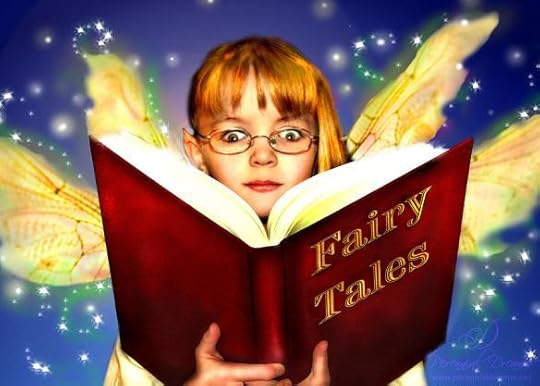 I loved fairy tales when I was growing up. We had a collection that my mother read to us, though she was careful to choose the ones that wouldn’t scare us. But the true fairy tales were scary and I am sure each one of us can look back and find various tropes or events in these often wild tales that might have made it hard to fall asleep after one was read to us.
I loved fairy tales when I was growing up. We had a collection that my mother read to us, though she was careful to choose the ones that wouldn’t scare us. But the true fairy tales were scary and I am sure each one of us can look back and find various tropes or events in these often wild tales that might have made it hard to fall asleep after one was read to us.Of course there was Little Red Riding Hood, which research has pointed out has elements of a rape story, the red cape, the nasty wolf, the deep dark forest–and that the young girl went off the path to pick flowers. But why did her mother send her alone to Grandma’s house?
In Against Our Will, Susan Brownmiller supports the idea that this fairy tale is a description of rape. However, many revisionist retellings choose to focus on empowerment, and depict Little Red Riding Hood or the grandmother successfully defending herself against the wolf. Which version did you encounter while growing up?
Maybe it was comforting to think that a thicket of roses could surround a castle and thus protect Sleeping Beauty. But I never wanted to be her, and I was sure I would never have touched that spindle, let alone hung out with the old crone up in the tower. (Fairly tales are always hard on women. Witches, crones. Evil queens. Sex again. The heroines are all virgins.)
I did have a favorite–I was in love with Snow White–her Disney-dark hair, her cape, and the elves were pretty cool. My mother was far from wicked, so the Wicked Queen didn’t bother me much. AND I WAS ALWAYS INTO PRINCE CHARMING.
In an older post, I wrote about trying on Snow White’s costume as an adult, at Disneyland:
But as I stood looking at myself in the mirror, I wasn’t Snow White. The really powerful part was the memory, …that kid buried inside me would have leapt for joy if such a costume had been offered to her. But she did okay without it. I wore a white cotton dishtowel tied around my neck. It fell not so gracefully over my corduroys, tee-shirt, and saddle shoes. And in my mind I was dealing with the Wicked Queen and hanging out with the Seven Dwarfs. The image in the mirror was different then. The image was filtered through my amazing childhood imagination.
EXPOSURE TO READING: THINKING THINGS THROUGH
But forgive me, okay, if I spent some time immersed in fairy tales. At least there were books in my house and I was reading, using my imagination. There have been comedy routines about fairy tales, that the women were passive, that all they needed was to snare the prince and spend all his money. IF YOU REMEMBER THE ROUTINE, please let me know. I can’t find it. But I did find this: THE PASSIVE LADIES OF DISNEY.
HOW TO STOP A TORNADO Folk tales??? This is a must read…
Maybe it’s only me, but I grew up hearing some things that were basically unbelievable. Not that I was a know-it-all, but my mother was real in her approach to life and danger.
But what about an approaching tornado in Chicago? The sky turning green, the trees bending? That did happen, though we were not carried away like Dorothy in the Wizard of Oz. But how do you deal with these frightening things?
A kind African American woman once told me she had a cure for tornadoes. “You just run outside with a butcher knife and slice at that old tornado.” Wow.
And that stayed with me for years. Especially living through some scares in Iowa. But when Google came along, I looked it up. More than once. NOTHING, until this past week, there it was:
Phil Latham writes about his grandmother saving him from a natural disaster.
The cloud my father saw was enough to get his attention. It was what we would call today a “wall” cloud. It easily could have spawned tornadoes.
My father yelled to my grandma through the kitchen window where she was washing dishes. She looked up at the cloud from the window, then turned off the water, dried her hands and calmly walked to the door.
She was carrying the biggest butcher knife she owned.
Grandma moved to an open space and got down on her knees. It was beginning to rain at this point. She pointed that butcher knife straight up to the sky and said some words. My father said they sounded like they were from a different language, and perhaps they were.
Then, in an instant, she brought the knife slashing to the ground.
My father looked down at her then he looked up at the cloud where the most astonishing thing was happening.
The cloud was splitting right over them and not just a tiny amount, either, but a full-blown cut. No tornadoes came at them that day; they didn’t even get more than a few sprinkles of rain.
Until the day he died, my father insisted my grandma used that butcher knife to “cut” the clouds.
Thanks for reading. And please share any family “tales” or “myths” — they define us. We are story tellers.
Nada Meeks FINE ART AMERICA.
March 7, 2021
Take a Walk, Awaken a Memory

Jacaranda Trees
“April is the cruelest month, breeding
lilacs out of the dead land, mixing
memory and desire, stirring
dull roots with spring rain.”
Those amazing words are not mine, they were written by poet T.S. Elliot, part of his work THE WASTELAND, in which he invokes that painful sweetness of once again being part of the open world, of wandering a path, of stopping to smell the roses.
Despite everything we have been experiencing, we deserve spring, sunshine, hope. It is why so many writers write about spring—the season of renewal, new birth, plans for change. Spring has it all over New Year’s day when many good citizens are hung-over from partying. And I never got the point of that!
MEMORY & SCENTS
Poets and others write about spring, about scents. In a past post related to Mother’s Day, I wrote: CAN A SCENT TAKE YOU BACK. In the gift of a bouquet I encountered the bloom stock, which carried me back to the florist shop owned by my maternal grandmother’s people. I was back in that shop with its rows of glass doors, behind which you could pick a rainbow of plants, roses and other flowers.
In Bill Bryson’s well-researched book, THE BODY he writes: “…the olfactory cortex…is nestled close to the hippocampus, where memories are shaped, and it is thought by some neuroscientists that may explain why certain odors are so powerfully evocative of memories for us.”
Has that happened to you? Spring, memory, nostalgia. Writers feel it, write about it. Others go outdoors and walk, run; children skip (masks and all as it is 2021). And yes this spring it might be harder to enjoy those spring scents, but here’s a tip: step off the path, move your mask, get a good nose-full. After all, IT’S time for some re-birth.
MEMORY and PLACE, TREES, BLOSSOMS
I am back in Illinois, living a mile from the home where I was raised. We had a lilac tree in our side yard. We had a garden of peonies up and down our front walk. Spring! Scents!
I know as I walk this neighborhood of memories, there will be lilacs and peonies, roses and lily of the valley.
Pico Iyer, also a writer, was born in Oxford, England, but has the good fortune of traveling far and wide. Missing Southern California, wondering what was now in bloom (the poppies, the jacaranda tress?) I found this on my desk. I save lots of stuff!
“Learning to find wonder everywhere is a talent I can as easily develop—and deploy—close to home as I can in Tibet or Cuba.”
But these are the words I had to save, having lived & traveled to Santa Barbara in springtime:
“Golden poppies will fill the slopes of Santa Barbara this coming spring. From my mother’s home I can spend hours just beginning to count the constellations. Those of us used to the dramatic changes of seasons can see the same shifts play out…and look forward to the jacaranda flowering above the streets in May. (Please enjoy the photo above!)
LOOK AROUND YOU…
So what is beginning to blossom and grow in your “neck of the woods.” Here, the grass is starting to green up and there are a few shoots pushing up from their garden beds.
FUTURE TRAVEL
Pico Iyer writes the following, which is TRUTH. Hold it close…
“To travel means, ultimately, nothing more than coming back home a slightly different person from the one who left. That’s as possible in 2021 as it was two years ago. The world is inexhaustible, if only we can open our eyes and look with more care at what we so often take for granted.”
Are you going on a walk today, in the future? Will your eyes well up with gratitude when we are once again blessed with greening and flowering? Mine will.
February 28, 2021
Waiting for the Night Song
Truth hides in fissures and hollows, in broken places and empty parts. It can be buried, crushed, or burnt, but the truth will always rise.
These opening lines of Julie Carrick Dalton’s first novel promises the reader much, as she delivers a story that fulfills those promises. It’s a novel that takes you places that might be in your memory… the stolen yellow rowboat, the meandering lake. The two young girls in that rowboat picking blueberries, trying to discover things about a boy high up on a cliff. It’s a world where your best childhood dreams of danger, disobeying and taking risks come to life on the page.
In its opening, Waiting for the Night Song brings the reader to the mountains of New Hampshire where Cadence Kessler: Outlaw Entomologist, better known as Cadie, is examining the flora and fauna near Mount Steady. She is searching for evidence that a black beetle is killing the trees on the mountain side, thus creating combustible kindling in the already parched region—the areas future condemned to forest fires.
“The pea-sized creatures were killing off trees, leaving them as kindling in the parched woodlands. She stroked the delicate destruction with her finger. The beetles’ telltale blue fungus, the color of the autumn sky before sunset, stained the wood. The color meant death to the pine.” And thus we fall under the spell of Dalton’s writing, for in many ways this is a novel that is true to science, Dalton, a writer, an advocate for the environment has definitely done her homework.
The meat of the novel’s plot begins when Cadie gets a text from her closest and dearest friend, Daniela, her partner in the yellow rowboat, the vessel for all her secrets and longings. The text reads: They are questioning my dad.
Cadie must climb down her mountain, rush to help her oldest friend as this is Cadie, loyal, competent, eager for adventure, but holding within her a childhood secret she hopes she will never have to face.
At the novel’s beginning, we see the future Outlaw Entomologist being formed by the push and pull of her choices: should she follow rules or ignore them; should she push ahead with all her dreams and imagined plans or pull back. Rarely sharing exploits with her parents, she is the girl-hero, steady and sure of her choices, charging ahead with her big heart and her often impetuous decisions. She actually hits a bear with her car, and is still able to arrive on time to an important meeting about the black beetle. In real life, maybe.
Cadie is a female Huck Finn, an eternal friend with a huge heart and eager mind who pulls you in. She’s a rule follower, her own rules —risking much to discover things about that boy at the top of the cliff; what his story is; and—after being pulled into a task she doesn’t want to be a part of, an eternal secret keeper: who will never reveal to anyone about burying the body. Cadie is young, scared. She keeps her mouth shut, hoping she can spare the lives and the futures of others.
As the story builds, Carrick Dalton not only brings the reader into the world of environmental worries, global warming, but also the world of undocumented workers—another reason Carrick Dalton has created this character: Cadie again being, the Outlaw Entomologist.
But she is also the epitome of the best friend, she and Daniela creating the Poachers Code, an eternal bond that sets the stage for more adventures to come.
1. Keep one foot in the water. 2. Never take all the blueberries. 3.Don’t kill bugs. 4. No witnesses. 5. Be kind to people who eat our berries. 6. No evidence. 7. Don’t throw a rock if you can’t see the target. 8. Lake water heals anything. 9. No matches in the woods. 10. Never tell.
If you think this is child stuff, it is, but it is also the platform for future events that will challenge lives, friendships and the trust we place in one another. The beauty of the Poachers Code is that Carrick Dalton’s story, her unwinding plot, tests and advances every aspect of the code. Grown-up Cadie falls in love with Garret, the boy at the top of the cliff, requiring that everything she believes about him will be tested. So will the plot, as it careens into one challenge after another, some attempts to tidy all story lines feeling forced and overwritten.
But the true beauty of the story lies in the friendships of Cadie and Daniela–and the author even tells us that Cadie carries a copy of Huck Finn in her backpack, where she sometimes presses leaves she has gathered. Yes! Those passages are the beating heart of the novel, allowing us to wander through the childhood of the two girls. Yes there has to be danger and dramas, even Huck Finn dealt with that. But as a story teller, this is where Carrick Dalton’s talent lies–probably emanating from her own experiences on lakes and mountains, her love of nature and the secrets that it holds. The challenge of writing about the future of our forests and that of undocumented peoples in our country is a big one. This novel has focussed on aspects of both, requiring story lines that twist and turn, at one point, causing Cadie to become super-human, dealing with a ripped leg, then getting stitches with no pain meds, but that’s okay, because Cadie is immediately off to save someone else.
The heart of this novel is its portrayal of a friendship, one that began in a yellow rowboat, two young girls off to pick blueberries in a place that must be theirs, as life is wide open, the sun is shining and when you have a Huck Finn heart, everything is an adventure. The novel might wish for every reader a friendship like that of Cadie and Daniela–I had one. I hope you did too.
Thanks to Net Galley for a preview of this novel. And thanks to Julie. I had the privilege of reading part of her novel very early in its development. Thanks, Writer Friend.
February 21, 2021
We’ve Tried To Create Rainbows Before…
 We’ve tried to create rainbows before. But the powers that be are the powers that stomp out such ideas and their prejudices are still raging. In some sectors. Like the attack on the Capitol.
We’ve tried to create rainbows before. But the powers that be are the powers that stomp out such ideas and their prejudices are still raging. In some sectors. Like the attack on the Capitol.But there are also those who find other ways. But they take time, and they take being aware. And we are all guilty of not being aware.
Then there are headlines like this one: A GRIM PAST WE’RE STILL LIVING WITH.
This two weeks ago in the Chicago Tribune. Yes, we are still living with it. And it’s quietly personal to me.
FRED HAMPTON AND MARK CLARK
A piece, by Michael Philipps in the Chicago Tribune, refers to another film coming out concerning the deaths of Black Panthers Fred Hampton and Mark Clark.
Phillips calls this new film a “leap and a bound ahead of the recent Netflix production ‘Trial of the Chicago Seven’”. He even calls the first film a speechifying fraud. (Wow, Aaron Sorkin must not be happy about that, as he wrote the script for the first film.)
But where am I going with this…The new film is “Judas and the Black Messiah.” It deals with the death of Fred Hampton and also focuses on the FBI informant William O’Neal, a one time petty thief, who using his prejudice as a motor, became head of Hampton’s Black Panther security. Thus he could provide intelligence as to where Hampton was staying that led to the FBI breaking into Hampton’s apartment and killing him.
The article provides the history: “On December 6, 1969, 14 plainclothes CPD officers fired more than 90 times on Hampton and other Black Panther Party members. Two died, first Mark Clark, who was on guard that night, then Hampton.”
ME and LACY M.
Searching Google, the day of the murder was a Saturday. So I am uncertain what day the Pep Rally was to be held the following week at Bloom Township High School.
I was a freshman English teacher, wet behind the ears. I mean I was innocent to a fault, though I had done my student teaching in an integrated Chicago school, one of the finest—Lane Tech. I was openhearted and eager, doing my best with my students. But I was truly inexperienced.
Each morning, students wandered into my third floor classroom for Home Room. This was a time for announcements over the PA system and for students to hand in signed report cards—general things, not related to their individual classes.
Lacy M. (will never forget his full name, but for privacy concerns won’t include it here) sat five seats back in the first row, by the door. He was tall, Black, quiet. That morning I don’t remember if I noticed the Black glove he was wearing on his left hand.
The assistant principal came on the PA for announcements which included reminding all students that the Pep Rally would be held in the gym at second hour. I don’t remember if that was my preparation period, meaning I didn’t meet with students, or if my second class arrived and we then immediately made our way to the large gymnasium on the first floor of the building.
AND THEN…
What I do remember and will never forget, it that Lacy M. walked over to my desk at the end of homeroom period, leaned over and said, “Don’t go to the Pep Rally.” That was all he said, and then he left.
Truly, Lacy hardly knew me. I mean, it was December. He had been in my classroom for maybe 20 minutes each morning, since September. I wasn’t his teacher. I was just some young woman trying to teach English to high school juniors. I did have three preparations (teacher talk for 3 different presentations to be given each day) so I was busy. I don’t remember how I responded to Lacy. But he was looking out for me.
The second hour Pep Rally went as planned until the very end when Black students moved down from the bleachers and began throwing anything that wasn’t nailed down.
THE RIOT
It’s all vague in my memory, because we had two of these episodes during my teaching years, and they flow together. They were definitely riots, because chairs and desks were thrown, windows were broken, I was told to go into a classroom that wasn’t mine, where students were huddled. Another time the principal grabbed a student who was coming into the library to do me harm. I was okay. I had to give a deposition.
WE DID OUR BEST, BUT WAS IT ENOUGH ?
I write this, because it’s so clear as to why these events were happening. But to enable students to still go to class, and keep things calm, the school went to a split schedule—half the students attending from 8-noon; the other half from 1-5. There were police on campus. We got through it, made it work. Things calmed down. Curriculum was changed. I mean, these were good things. We needed to dust off some of our old ways. Stop teaching plays or novels that as another student once told me “Has nothin to do with my life.” And that changed. A combination of the classics and new authors of color provide a diversified and immediate curriculum that students WANT to take part in.
FINAL THOUGHTS
In a recent interview in TIME MAGAZINE Inaugural Poet Amanda Gorman talked to Michelle Obama. Gorman: Poetry and language are often at the heartbeat of movement for change. If we look to Black Lives Matter protests, you see banners that say: THEY BURIED US, BUT THEY DIDN’T KNOW WE WERE SEEDS.
I still wonder about Lacy M, and how his life proceeded. He did good by me.
For more information: Judas and the Black Messiah 3 and ½ stars. A Grim Past We’re Still Living With by Michael Phillips Chicago Tribune, Feb. 7, 2021
Artwork: WESTWAYS Spring 2021
February 14, 2021
VALENTINE THOUGHT: ARE YOU LIVING ONLY FOR THE NOW?
 Yesterday, watching how the Senate voted, it felt like THE NOW was their only concern. They seemed to be deciding that the power they had in that moment was more important than living into the future, than considering the people they represent. Grasping for their singular purpose, meant ignoring how they should have voted—for their constituents. But instead, many were still voting for just themselves, voting out of fear for that guy in the shadows.
Yesterday, watching how the Senate voted, it felt like THE NOW was their only concern. They seemed to be deciding that the power they had in that moment was more important than living into the future, than considering the people they represent. Grasping for their singular purpose, meant ignoring how they should have voted—for their constituents. But instead, many were still voting for just themselves, voting out of fear for that guy in the shadows.STILL, I believe in democracy. It just doesn’t always work the way it should. Yes, we have checks and balances, but damn, our government reps don’t always hold on to the truth. And where would we be if the Framers had not been able to look into the future and realize that? (There was actual video and even that didn’t make a difference.) It didn’t touch some, the way it touched others. It’s power, that’s for certain. Fear of losing that power caused them to look away.
THE NOW VERSUS THE FUTURE
I write this only to remind each of us that only considering THE NOW is not the best idea. We have to consider the future. There will be a tomorrow. That’s why many of us have children, to replace ourselves. Not for glory, but for love. It’s cynical to live in bubble that is only about you. And COVID, unfortunately has confined many of us to our little bubble.
But moments ago, my husband and I were able to communicate with our adult children, our grandchildren on this Valentine’s Day and that brings more love into our lives. We realize our good future.
SO LET’S ALL BELIEVE IN THE FUTURE, AND…HAPPY VALENTINE’S DAY
I hope you have sunshine (we have snow and sunshine) maybe some chocolate ( I am addicted to dark chocolate) and the voices or texts from those you love. Maybe even a glass of wine or some flowers. It doesn’t matter. We are gifts to each other. You are a gift to me. And I’m thinking about the future….because the “now” goes away—there is always tomorrow. And the sun will come out…
Photo, thanks to French Country Cottage
February 7, 2021
THE KINDEST LIE
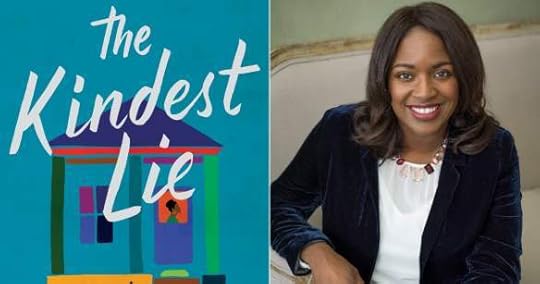
The Kindest Lie is written with love, yet you feel the undertow of sorrow and regret. Amazing.
It’s Black History month and Nancy Johnson’s debut novel, THE KINDEST LIE, has just hit bookstores, gifting us with an evocative and emotional story.
Ruth Tuttle inhabits an unsettled world before and after Obama, a world of struggle and success–a world where family love is sometimes misguided and often based on secrets. An engineering degree from Yale has transported Ruth from the small Indiana town of Ganton, where she was raised, to the Bronzeville neighborhood of Chicago. The novel begins on a special night–Ruth and her husband Xavier have gathered friends to await the results of the 2007 presidential election. When Obama wins, there is joy in the room, the future now seemingly boundless.
“Her whole life, Ruth hadn’t dared to believe this could happen, and she almost forgot to breathe. A picture of the little house in Ganton came to mind…Mama at the kitchen table counting money on the first of the month. Papa’s body quivering underneath his plant uniform as he tried to walk straight in the early days of his illness…To get here, to this moment. To this man with the funny name. To this day in history.”
But their joy that night sparks in Xavier an amazing idea: if they had a child, now it might be possible for that child to become president. Ruth immediatly pushes back, asking: “Aren’t you getting ahead of yourself?” knowing if this is truly what Xavier wants, her life will change, she being forced to face her past in Ganton, to remember Ronald Atkins.
They met in high school, Atkins, a white football player, Ruth’s mouth becoming dry, just speaking his name. A story, eleven years past its due date, Johnson writes: “Ruth thought back to when she was seventeen, with Mama and her brother Eli looking down on her half-naked body in the bed, their faces tight with worry, urging her to push.”
And then in those powerful moments of Obama winning, Ruth surrounded by her successful husband, her smart and successful Black friends, she questions if she has truly ever left Ganton, left Mama, the grandmother who raised her after Ruth’s own mother left, seeking drugs, shrugging off responsibility, knowing that Mama would step up, would always be there rescuing family, even naming Ruth and her brother Eli.
Johnson writes: Ruth: one syllable, old school and biblical. A name that Ruth’s grandmother said would at least get her to the interview.
But though smart, farsighted and an indomitable Black woman, Mama cannot protect Ruth from every aspect of life, from Ronald Atkins, from the physical power of teenage sex, when this white football player tells a young innocent Black girl, “I see you,” Ruth becoming fired with desire because, “Everyone saw him.”
But as the “little knot of unripe fruit” grew, “everything felt like walking on the edge of a cliff.” Johnson knows how to fill in the background, these two burdened lovers dancing to “killing me softly” which in retrospect is exactly what Ronald Atkins did to Ruth.
Johnson has created in Ruth, a character who epitomizes a woman who has found a new pathway and turned away from her past. But when that past rises, Ruth must know everything, make Mama tell her: who she gave her son to, where he is now living, how his life has been without her. Back in Ganton, a town suffering from a dying economy of closed plants, workers out of work, Ruth comes face to face with the poverty affecting people of all colors and stations. Searching for her son, she encounters a white boy of a similar age, named Midnight, encounters the loss, anger and futility that can affect children, no matter what color they are.
Johnson has created real people, brought us into their kitchens to watch them cook wonderful foods, into a beauty salon to hear of their joys and sorrows, their complaints concerning how to raise a child, keep a business going. Though it’s the holidays, there is poverty at Christmas, at New Years, where weather holds people inside to once again find joy in friendship and the lights of a small Christmas tree. Johnson’s real people. We see it all, their weaknesses and strengths. We experience their honesty and their hidden lies, not only in reference to their own lives–where they live, how they live, how they struggle–but also in how they reveal their pride in Ruth and what she has accomplished. As Eli, her brother reminds her, “Nope, one baby don’t put you at ho status…” Certainly KIND and also honest.
January 31, 2021
Joan Didion and Me…
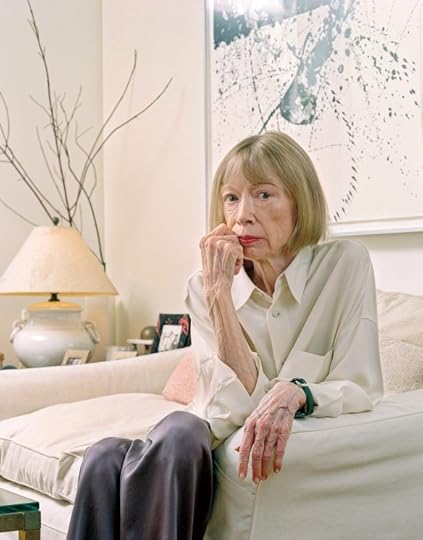
I faithfully read Time Magazine and the last page interview. This week Lucy Feldman interviewed writer & journalist Joan Didion. I became a fan when Didion published The Year of Magical Thinking after her husband died. I then read essay collections and other works—she a word crafter, convinced of her own ideas. Ms. Didion is now in her 90s. Maybe that’s why her answers were, well, terse. Could I do any better? Here are a few attempts.
How are you feeling in these trying times?
Joan: I feel fine. Slightly bored, but fine.
Beth: I’m eager to get my hair cut, see my grandchildren. But I’ll follow the rules no matter what.
You once said that an experience with vertigo and nausea you had in 1968 was an appropriate response to what was happening in that period. What’s an appropriate response for 2020?
Joan: Vertigo and nausea sound right.
Beth: Quiet rage, but a gradual feeling of relief when the year finally ended ie on Jan. 20th.
You wrote two defining books on grief, The Year of Magical Thinking and Blue Nights. What would you say to the millions who have lost loved ones this year?
Joan: I don’t know. I don’t know that there is anything to say.
Beth: These are difficult times and loss cuts deeply. Mourning loved ones is necessary and you have a right to go through all the stages of grief: denial, anger, bargaining, depression, and acceptance. But I would hope that those who have lost someone have a partner to talk to—either in person or regularly through the phone or video chat. We need each other.
Do you have hope?
Joan: Hope for what? Not particularly, no.
Beth: Of course. I don’t think you can get out of bed missing someone or mourning someone or looking at a time when you can’t do the things you love and not have a glimmer of hope—we all have to have hope.
Which feels more like home: New York or California?
Joan: Both.
Beth: I would have to alter the question to Chicago or California. After recently living in the latter for seven years, yet having been born and raised in Chicago, I would have to say I have come HOME. But there is always adjustment. Today, we have over ten inches of snow. So you could say that does require an adjustment, but I made my first snowball in seven years! This snow is “GREAT FOR PACKING!”
What do you make of the old adage, write what you know?
Joan: I don’t make anything of it.
Beth: It’s a great stepping off place, especially writing fiction. You have to KNOW something about the PLACE in the story. People mirror where they live: neighbors, public places like schools, churches. I don’t think I could write about NYC, but I can write about Chicago.
Do you ever reread your past writing? If so, what do you think?
Joan: Sometimes I do. Sometimes I think something is well done, sometimes I think, Woops.
Beth: Ditto.
Is there anything you wish to achieve that you have not?
Joan: Figuring out how to work my television.
Beth: Ditto.
What are you looking most forward to in 2021?
Joan: An Easter party, if it can be given.
Beth: Everything—getting the vaccine, shopping, trips to be with my family. Blessings.
PS These are not all the questions Joan was asked, but the ones I felt pertinent to my post. Thanks for reading.
January 24, 2021
Saving Your Bones: Tips for Bone Health
 For both men and women, bone health is important but often taken for granted in the early years of life. Then as aging progresses, the statistics for bone breaks increase. Friends break a wrist, an ankle, a leg. We all want to avoid this; don’t want our local orthopedist or physical therapist on speed dial.
For both men and women, bone health is important but often taken for granted in the early years of life. Then as aging progresses, the statistics for bone breaks increase. Friends break a wrist, an ankle, a leg. We all want to avoid this; don’t want our local orthopedist or physical therapist on speed dial.Preserving bone, preventing falls and their subsequent breaks is important for overall health as long periods of inactivity just create other problems in the body. Also, strong dense bones insure good posture, provide physical strength for all work and activities, and aid in good balance–which is another key to preventing falls.
HOW YOU LOOK, WHAT YOUR BODY IS CAPABLE OF…
But there is another plus in our photo-conscious society. A strong skeletal frame directly impacts physical appearance. People with healthy bones, stand up straight, feel and look more youthful. Physically and psychologically they are healthier; they can embrace life without fearing loss of balance, a bad fall and a debilitating bone break. They can continue to take the stairs, walk to the park and beyond, lift their grandchildren–even move furniture or pick things up off the floor. In other words, bone health insures that the smallest AND the largest capabilities you enjoyed in your youth can still be part of you.
SO HERE’S WHAT YOU NEED TO KNOW… To keep your bones strong…
We now know that throughout life a diet rich in calcium, calcium supplements, and Vitamin D from sun exposure for calcium absorption are all extremely important. Avoiding the negative impact of smoking and alcohol also preserves bone health. And today physicians better understand osteoporosis and how to stop or prevent its growth.
DEFINITIONS
Osteoporosis is a disease of the bone that affects almost half of men or women over the age of 75, women being five times more likely to develop the disease. Women have thinner and smaller bones to begin with, and after menopause, usually around age 50, they lose bone mass as their bodies no longer produce estrogen, a bone-protecting hormone.
IF YOU READ ANY OF THIS POST, READ THE FOLLOWING…
Bone is living tissue that throughout life goes through the process of constant formation (new bone is formed) and resorption (old bone is broken down). But aging changes the process in both men and women. More bone is lost then new is formed. The skeleton slowly declines. Osteoporosis literally means “porous bones;” the word describes bones that have lost an excessive amount of protein and mineral content—especially calcium. Bone mass and bone strength have decreased. Bone is now vulnerable to breaks.
Previously it was assumed that this bone aging process could not be stopped. Our mothers’ and grandmothers’ generation suffered height loss because of compression fractures in their vertebrae. These fractures often led to the formation of an abnormal kyphosis or dowager hump on the upper back. Debilitating hip and leg breaks often meant the duration of life was spent in a wheel chair.
Now there is good news for fifty-something women who have options to keep bone strong and avoid the bone loss of previous generations. We know that calcium in the diet and weight-bearing exercise can help ward off osteoporosis. We have bone density scans to check for osteopenia—the early stage of osteoporosis. Healthcare providers often recommend the right amount of calcium supplements and stress diets rich in calcium and other minerals. For people who are at greater risk for the disease or have rapidly advancing bone loss, providers often prescribe bisphosphonate medications like BonivaR and FosamaxR that can slow or stop the progression of osteoporosis.
Men also need to be aware of this disease, for by the age of 65 or 70 they are losing bone at the same rate as women. Though osteoporosis is often considered a woman’s problem, there are 2 million men in the United States with this disease.
HOW TO FIGHT BACK
The key is to keep bone strong by stimulating new bone growth. Research confirms that any activity that puts increased stress on your bones, making your bones and muscles work against gravity (weight-bearing exercise) helps you build healthy bone. Choose from some of the following activities:
Walking, race walking, weight-vest walking, jogging, or running
Aerobics, step aerobics
Cycling, if you can increase the resistance as some gym machines allow
Climbing stairs
Dancing, especially contra dancing, tap-dancing, polka and other folk dances that involve stomping and hopping
Sports such as soccer, basketball, tennis, volleyball, softball
Gymnastics Weightlifting Jumping rope Martial arts Tennis Bowling
Yoga, Pilates
Housework and yardwork, like cleaning, gardening, shoveling snow
If you do Yoga, Paula Secker, an instructor of Anusara-Inspired Yoga, explains that the weight of your own body is utilized to create this weight-bearing exercise. Bones are strengthened as muscles of the body pull, hug, and shorten bone to achieve yoga poses keeping bone strong. Secker mentions popular yoga poses like downward facing dog and plank for hip, arm and leg bone strengthening. All standing yoga poses work the legs, and arm-balancing poses strengthen the upper body, which is often weak in women.
Secker emphasizes an additional benefit of yoga: it enlivens, opens and increases the energy of the body and body fluids like blood. Fluids enervate the entire body, working to increase the rate of bone cell production.
AS WE AGE…MY WOMEN FRIENDS, MY MALE FRIENDS, this is so important…avoid forward head posture….
Loss of balance is a great concern as people age—leg muscles weaken and other systems like vision, nerves and body receptors don’t supply the right signals to the brain. Secker recommends yoga for those who need to revitalize this skill, as many poses require balance, and repetition and mastery is just what the brain needs to reestablish stability. (Or practice standing on one leg while watching TV)
Yoga also helps Secker’s students achieve body awareness and good posture as they age. Poses require constant realigning of the body, particularly how the head sits on the shoulders. This fights forward head posture, a sign of aging, which is often exacerbated by computer work and weak musculature.
Secker stresses that there is a relationship between proper positioning of the head and the straightening of the torso and body core. Aligning the head to center position automatically tones the core and torso. Practice this when driving, imagining a cosmic head rest holding your head upright and keeping your body straight. And make sure you add weight-bearing activity to your schedule every day. For starters—take the stairs!
PS I have been dealing with my own aging processes, so every morning I do 15 minutes of Yoga and hope to increase it. Because I am now in Chicago and it’s winter, my husband and I both use a treadmill. When the snow melts, we will be off on our walks.
photo: thanks to NewYork Parkour.com

